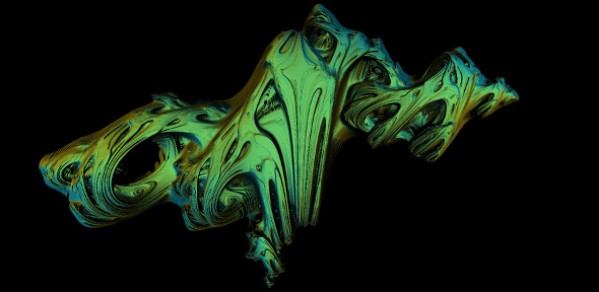
Every serious PC gamer knows what a difference a good graphics card can make to the fun they have. But it is not just hardcore gamers who have recognised the worth of a PC graphics card; increasing numbers of research scientists have woken up to their potential too.
The scientists in question are not using the cards to appreciate the detail in PC games. Instead they are using them as cheap sources of supercomputer-class processing power, reports Mark Ward, Technology Correspondent on the BBC News website. The way that graphics cards are built makes them very good at the repetitive computational tasks many scientists use to test theories, models and predictions. With the latest graphics processors having more than 100 processing cores that can add up to a lot of number crunching.
By harnessing that processing power, many scientists are getting results from simulations far faster than before.
Designing turbine blades
Dr. Graham Pullan, and research student Tobias Brandvik, from the Whittle Laboratory here at the Department of Engineering have sped up the simulation of flow around turbine blades by up to 40 times using a single graphics card. "People will have noticed that their PCs now have 2 or 4 cores. GPUs are way ahead with over 100 cores," says Graham. "It is getting easier to program them as well. We no longer have to re-write our code entirely in graphics commands - there are now several general purpose programming methods available."
With such a dramatic reduction in run-times, Graham and Tobias hope their programs will lead to improved efficiencies for jet engines and for power generation turbines. "We could either run simulations at current resolutions much faster, and hence make the design process more interactive. Or we could take the same time as we do now, and get much more detailed simulations which are more accurate," says Tobias.
But there are still problems to be overcome. A typical cluster of networked PCs used in jet engine design would have a total memory of at least 100GB - 100 times greater than a typical graphics card. "We need to have multiple cards in each PC and we need to network several PCs together," says Graham. "It is not easy to do this and retain the overall performance, but we, and the graphics card manufacturers, are working on it."
If you are interested in this new field, you may wish to attend the "Multi-Core and Reconfigurable Super-Computing" conference in Belfast in April http://www.mrsc2008.org
For further information, email Dr. Graham Pullan at gp10006@cam.ac.uk or visit his web pages at: http://www.eng.cam.ac.uk/~gp10006
Ray-tracing and real-time processing of video signals from a camera
The Department's Dr Rich Wareham is also using graphics cards in his work to perform ray-tracing, a technique used in computer graphics to create realistic images by calculating the paths taken by rays of light entering the observer's eye at different angles. The sample image shown is generated in real time from his application and shows a special sort of mathematical object known as an 'escape time fractal'.
Rich says "Fractals like the one shown have long been used as a test bed for new computer graphics systems. With recent advances in graphics processing unit (GPU) technology, the amount of computing power available to scientific researchers has grown hitherto unimagined levels. The computing power of a consumer-grade GPU now present on mid-range graphics cards is truly staggering. With cards you can buy off the shelf for a hundred pounds theoretically capable of performing 340 billion calculations per second it is worth investing in the time required to learn how to leverage the computing power of these processors in applications beyond computer graphics."
In addition to his work on ray-tracing, he is working on new techniques for reducing the storage requirements for three dimensional objects by converting them to a 'depth map' on a sphere, much like the surface of the Earth is represented via a topological map on a piece of paper. The system was originally developed for processing and compressing the large spherical images of the sky generated from modern astronomical observatories.
He is collaborating on a project to use GPUs for real-time processing of video signals from a camera. He says "The system is designed to record the performance of an athlete in real time and give track-side performance data to the coach. Our cameras are very high-speed but the raw data that we get out of them is unsuitable for traditional image processing. We use GPUs to perform the initial conversion and processing because they are able to handle the sort of frame rates (>100 frames/second) that we require for accurate analysis."
Rich has recently given a talk covering the modern graphics processing pipeline providing tips and techniques on how it may be 'tricked' into performing useful computation. The talk covered the actual code required to implement a simple image processing example capable of dealing with full HD resolution video streams in real-time.

